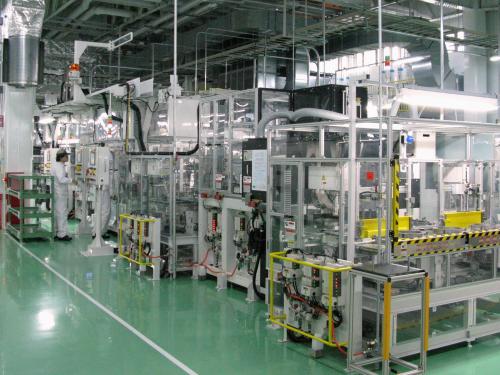This brief is the third in a series of three exploring trends, measurement, and the outlook in productivity growth over the past two decades in major economies. It is part of a project on the “Great Paradox” of technological change, stalled productivity growth, and inequality being undertaken jointly by the Global Economy and Development Program at Brookings and the Chumir Foundation for Ethics in Leadership.
“Productivity isn’t everything, but in the long run it is almost everything” (Krugman 1994). Productivity is indeed the main engine of economic growth. This will likely be even truer in the period ahead if the impulse to growth from factor accumulation slows. Notably, in many major economies, population aging will constrain the growth in labor input. In advanced economies, the leveling out in labor force participation and education attainments could reinforce this effect. While the importance of productivity to future economic growth is rising, productivity growth has been on a declining trend across a broad range of economies, including most advanced economies and, more recently, many major emerging economies as well.
Looking ahead, what are the prospects for productivity growth? Is the recent productivity slowdown largely cyclical? Or is it more structural in nature and likely to persist? There is much debate on this issue. This brief focuses on advanced economies that are the primary subject of this debate.
Since technological progress is the key force behind productivity growth in the medium to long term, much of the current debate on the future of productivity revolves around prospects for innovation and technological change. Views cover the spectrum. At one end are “techno-pessimists” who see a long-term slowing of the innovation engine, assessing recent and prospective innovations, notably those related to information and communication technology (ICT), to be less significant in terms of productivity impact than those that preceded them, such as the internal combustion engine and electrification (Cowen 2011, Gordon 2016). Gordon also argues that the effects of slowing technological progress on potential growth in advanced economies such as the U.S. will be reinforced by a number of headwinds, including population aging, a plateau in education levels, rising income inequality, energy/environment, globalization, and the debt overhang. Another view is that ICT advances did appreciably boost productivity growth from the mid-1990s to the mid-2000s, most notably in the U.S., but that much of the fruit from ICT-based innovation was plucked then and subsequent changes have been more incremental than transformative (Fernald 2014).
At the other end of the spectrum are “techno-optimists” who argue that ICT innovations are transformative and that new advances will continue to stimulate productivity growth, although the impact could be subject to lags because of the time needed to implement complementary changes (such as in organizational structures) or could be constrained by policy and institutional impediments (Brynjolfsson and McAfee 2011, Mokyr 2014). Gains from new general-purpose technologies such as ICT may come in waves rather than in a single surge followed by decline: for example, productivity growth from electrification came in multiple waves over several decades (Syverson 2013). So the ICT-based rise in U.S. productivity from the mid-1990s to the mid-2000s may not be a one-off event. Even if the benefits of the first wave of ICT innovation are considered to be largely already realized, productivity could benefit from the next waves of innovation such as radical increases in mobility from smartphones, cloud computing, artificial intelligence, and the internet of things. Cyber-physical systems could unleash a “fourth industrial revolution” (Schwab 2016).[1]
Is innovation losing steam or is the recent slowdown in productivity growth in most major economies explained more by a slowing of the speed with which new technologies diffuse through economies and translate into higher productivity? Recent research based on firm-level data shows that both of these factors may be at play to different degrees (Andrews et al. 2016, OECD 2016a). Productivity growth in firms that are at the frontier of technological change has held up much better, suggesting continued robustness of innovation activity. More recently, however, productivity growth in these frontier firms has tended to slow. The productivity slowdown has been much more serious in firms below the technology frontier (Figure 1, see below). The widening productivity gap between frontier firms and lagging firms suggests a weakening of the penetration of new technologies across firms. While technology adoption lags across countries (between firms at the global frontier and firms at the national frontier) have been declining over time, technology penetration lags within countries have increased (Comin and Mestieri 2013b). So the innovation machine may have slowed, but the diffusion machine appears to have slowed even more.
The weakening of technology diffusion matters greatly as it is central to productivity and growth dynamics: for the vast majority of firms, processes of technology adoption and diffusion are far more important than direct research and development investment in new technologies (Rodrik 2016). While the weakening of technology penetration rates has been holding down productivity growth, it also implies that there remains a significant upside potential for productivity gains from technologies already developed, provided obstacles to wider diffusion are removed. Potential opportunities for gains from new technologies remain sizable in several sectors, including education, health, energy, and infrastructure, and government (Baily et al. 2013). It is estimated that in the U.S., the lagging sectors are less than 15 percent as digitalized as the leading sectors; and because the less digitalized sectors are some of the largest in terms of GDP and employment, the U.S. economy as a whole is reaching only 18 percent of its digital potential (McKinsey 2015).
Innovation and diffusion of new technologies have been hampered by a decline in business dynamism. In most OECD countries, business startup rates have been falling, with fewer new entrants that typically spur competition and spearhead change (Haltiwanger 2016, OECD 2016b). Labor market fluidity, as measured by rates of job creation and destruction and labor reallocations, has declined as well. Just as the slowdown in productivity, the slowdown in business dynamism predates the global financial crisis and the recession that ensued. In the U.S., for example, measures of firm and labor market dynamism have been trending down well before the crisis (Figure 2). Reforms that increase competition in product and factor markets and promote a broader diffusion of gains from innovation would both boost productivity and foster more inclusive distributional outcomes (Furman 2016, OECD 2016c).
Diffusion of new technologies has also been hampered by skill constraints and mismatches (Adalet McGowan and Andrews 2015, OECD 2015). As new technologies have created demand for new and higher-level skills, supply has been slow to respond, limiting productivity gains but also contributing to higher wage inequality. Labor market rigidities, some of which are hard to overcome, have added to the challenge of complementary shifts in skills and labor reallocations. There is evidence of high and rising skill mismatches in many advanced economies (Figure 3a). Estimates show that productivity gains from reducing skill mismatches and improving the allocative efficiency of skills alone could be sizable (Figure 3b). Dynamic gains in productivity from boosting education and training so that skills can better keep up in the race with technology would be much more significant—and would also help arrest the rise in inequality (Goldin and Katz 2008).
Prospects for technological progress and productivity growth will depend also on a rebound in investment. Weaker investment has been part of the story of the slowdown in productivity growth (Ollivaud et al. 2016, OECD 2016b). Innovations are often embedded in capital and need new investment to diffuse across economies. In most advanced economies, investment rates fell sharply after the financial crisis but were already on a declining trend. The contribution of capital deepening to labor productivity growth had been slowing for several years prior to the crisis in most of these economies (Figure 4). The direct contribution of ICT capital deepening to labor productivity growth in most advanced economies peaked in the late 1990s and has waned since then (Figure 5). Intangible investment in knowledge-based capital (e.g., research and development, organizational capital, training, databases, design, and other forms of intellectual property) has emerged as an increasingly important underpinning of innovations and their subsequent adoption (Corrado et al. 2013). Having previously risen rapidly, it too has tended to decline over the past decade (Figure 6).
Overall, part of the slowdown in productivity growth appears to have resulted from cyclical factors related to the global financial crisis and its aftermath that saw sharp declines in aggregate demand and capital accumulation. The slowdown in the adoption of new technologies in part reflects an endogenous response by firms to the disruptions caused by the crisis (Anzoategui et al. 2016). However, an important part of the productivity slowdown reflects structural factors that appear to have lowered the underlying rate of productivity growth (IMF 2015, OECD 2015, Blanchard 2016). The review of recent research in this brief points to some structural dimensions of product and factor markets that have slowed technological innovation and diffusion. Productivity growth will recover as economies emerge from the long shadow cast by the financial crisis and the Great Recession, but it will fall short of the pre-crisis levels unless the structural impediments are addressed. Policy needs to aim to both keep the innovation machine humming (to keep pushing the innovation frontier) and to crank up the diffusion machine (to facilitate adoption of new technologies throughout the economy).
In the debate between “pessimists” and “optimists” about the future of productivity, the issue may be less about who is right and more about how the challenges ahead pointed out by the “pessimists” could be addressed to capture the opportunities envisaged by the “optimists.” The future could be one of contingent optimism, if technological possibilities are supported by complementary policy and institutional change. Moreover, while this brief has focused on advanced economies, a cause for relative optimism about the future of productivity is the prospects for emerging market economies, where the potential for gains from technological progress remains large despite some recent slowing of growth.












